Diet and Exercise as an intervention to treat mental disorders.
Physiology is the study of the normal function of living systems and is derived from the Greek φύσις (physis), meaning ‘nature, origin,’ and -λογία (-logia), meaning ‘study of’[4]). Thus, physiology is a sub discipline of biology that is concerned with the chemical and the physical functions that exist in a living system. Epidemiology, the study of diseases, uses physiological models to explain disease development as a function of deviation away from normal conditions under which chemical and physical functions occur. It is common practice among medical doctors to describe disease development regarding physiological changes that deviate from “normal” conditions.
Therefore, in the context of physiological epidemiological disease models, the physiological foundation of our body determines its state of health. Of all physiological processes, breathing seems to be the most fundamental one because the bodies’ need for a steady supply of oxygen supersedes that for food, water or sleep. Breathing has a definite effect on the bodies’ physical state, and oxygen is the necessary ingredient for chemical reactions, such as the Krebs-cycle:
C6H12O6 (s) + 6 O2 (g) → 6 CO2 (g) + 6 H2O (l) + heat
About 95% of the oxygen we inhale is used in the Krebs-cycle to generate ATP in the mitochondrion. The chemicals of the reaction: carbon, oxygen, and hydrogen of carbohydrates have divergent fates. While carbon and oxygen are combined to form carbon dioxide which is exhaled by the lungs as a waste material, hydrogen has a higher, more meaningful, physiological role. The chemical composition of hydrogen consists of a single proton, and a single electron. Specific nucleotide moieties [= functional part of a molecule] capture and carry hydrogen from catabolic reactions such as glycolysis to an enzyme complex located in the matrix of the mitochondrion.
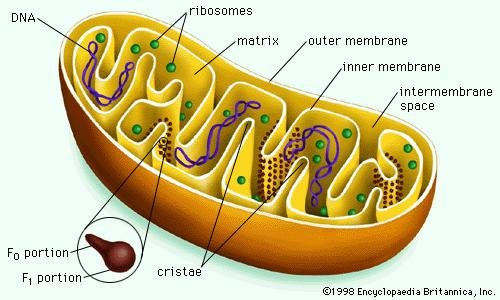
Generation of energy under normal physiological conditions
This enzyme complex catalyzes the cleavage of hydrogen with hydrogen-carrying nucleotides, for example, nicotinamide adenine dinucleotide (NAD). When this chemical carries hydrogen it is written as NADH and is said to be reduced; when, however, the molecule relinquishes its hydrogen, it is said to be oxidized. The membranes of mitochondria consist of a series of molecular complexes known collectively as the electron transport chain, whose purpose is to carry electrons along its length.
The energy dissipated by this flow of particles is used to pump protons from the interior of the mitochondrial matrix into the interlaminar space between the inner and outer membrane. Thus, while negatively charged electrons accumulate in the interior of the mitochondrion, positively charged protons accumulate in the interlaminar space, creating a difference in potential energy. This power differential provides the immediate source of fuel for the chemical combination of adenosine diphosphate (ADP) with inorganic phosphate (Pi) to produce adenosine triphosphate (ATP) [34].
The inter-laminar protons flow through the substance of a catalytic, integral membrane protein containing ADP and phosphate. The energy dissipated from this inward flow of protons enable the fusion of ADP and phosphate to reconstitute ATP. In this manner, figs, dates, and oats eventuate in glucose whose energy transfers to the bonds of ATP. It is interesting and rather edifying to appreciate that the complex chemical reactions responsible for affording living beings the energy essential for their existence are inextricably linked, indeed entirely dependent upon, elementary constituents of matter—infinitesimal, immaterial electrons.
This way, we have shown one of the crucial physiological dependencies in the body and how it effectuates the general functioning of the metabolism; the amalgamation of all chemical and physical interactions of the body. To maintain healthy body function we have to work towards an ideal condition that is called homeostasis. Homeostasis is a set of conditions, a boundary, in which the chemical reactions and physical interactions of the body can occur without error.
Homeostasis and Salt
It is my belief that erratic behavior results in the absence of a full range of micro-nutrients. The chemicals that dissolve in body fluids are amino-acids, carbohydrates, and fatty- acids, collectively referred to as macro-nutrients that provide energy. However, the large variety of micro-nutrients; mostly salts that disperse in the body are much more important for optimal health. The body is well adapted to deal with energy needs and derive it from practically any source, that, however, does not hold true for the wider range of micro-nutrients. Micro-nutrients are involved in practically all vital processes. Their abundance, presence or absence can drive behavior and determine if we are within the boundaries of homeostasis or not, and unlike macro nutrients, some micro-nutrients are entirely deficient in the diets of most people [13].
Chemically, all micro-nutrients are salts. Any salt is a combination of metal and non-metal, like calcium [=metal] fluoride [= non-metal, halogen]. These salts constitute the vitamins [vita = vital, min = mineral]. For example, ferrous phosphate is needed to form hemoglobin, while sodium chloride is needed in the extracellular environment for inter-cellular communication [35]. Among the many tasks of sodium chloride are the transfer of electric potentials between cells and the management of water content in the body. Since micro-nutrients such as sodium chloride are involved in many different, yet crucial bodily processes monitoring their intake is important to maintain optimal health. Sodium is a special case in the realm of micro-nutrients since it is actually over consumed by most people who follow a standard diet.

The reason why micro nutrients are often present in insufficient (or too sufficient) quantities is that unlike macro-nutrients, micro-nutrients cannot be derived from any food source. While all non-artificial foods contain all macro-nutrients, Vitamin C, for example, cannot be derived from meat as the animal already metabolized Vitamin C for the functioning of its immune system. However, fat-soluble vitamins are overly abundant in meat, in fact, in such quantities that the consumption of certain parts of animals, organs like the liver, can cause hypovitaminosis A (A vitamins are fat-soluable). Therefore, special attention has to be taken when considering the intake a micro-nutrients.
Since salts have a metal component they have the ability to carry electric charges from the mitochondria of a cell to any other part of the cell, to any other cell, or any other part of the body. To transfer electric potential efficiently and correctly, the body requires an exact quantity of mirconutrients at all time. Nature, amazing as it is, has constructed a perfect system to carry the electric potentials generated by cells throughout the body because the cellular salts are dispersed in water. Pure, that is, distilled water (H2O) cannot conduct any electricity and is a perfect insulator; meaning that it has no influence on the electric charges in the body. All communication of the cells rests on the dispersed salts and they are perfectly insulated in the water they swim in. This insulation mechanism guarantees that the electric charges are transferred efficiently and do not harm the body because they only enter specifically designed gates, enzymes [= functional proteins] so that they always land where they are supposed to land. The body’s cell membranes and components are highly specific to guarantee that only the particles with the correct charge can pass through and attach to a specific cell component. However because these components are so exactly designed a sufficient quantity of all micro-nutrients needs to be present at all times.

Deviation from the ideal homeostatic condition will, eventually, lead to the deterioration of physiological function and cause disease as soon as the bodies reserves are depleted, or, on the contrary, overloaded. The range of developed diseases can include mental disorders. The inclusion of mental disorders is a logical conclusion from what we know about our body’s physiology. If some micro-nutrient is not present, it is possible that the body ceases to have the capacity to perform a specific task related to that micro-nutrient. It could be that electric charges from one neuron to another cannot be transmitted because the body lacks the salt that is necessary to transmit the charge. As a result of the failing process a mental disorder arises and is diagnosed eventually as the bodies reserves deplete and the problem becomes more and more apparent.
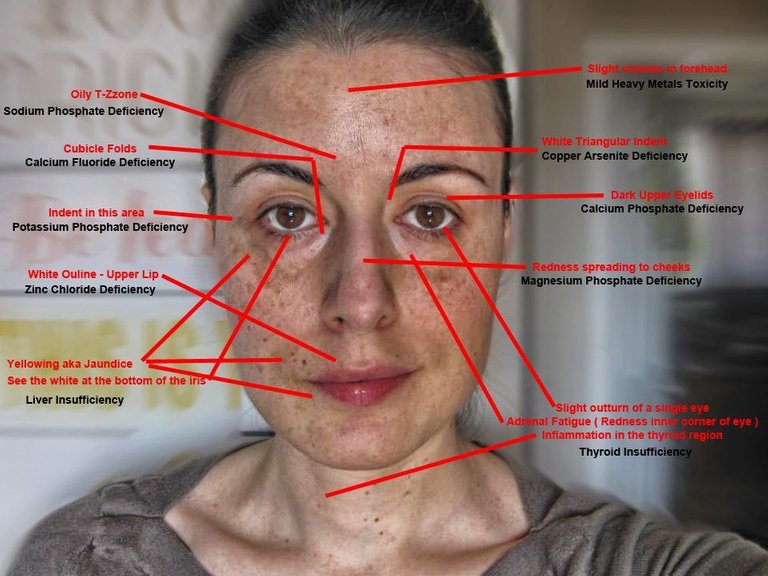
Potential diseases that develop if the body’s salt content is not managed appropriately include conditions such as anemia which occurs when the Ferrum phosphate content in the blood is too low. Hemoglobin loses its ability to carry oxygen from one cell to another because it can no longer produce the cell structures that are necessary to transport the electric energy from oxygen to other cells. If the sodium chloride content is too low blood pressure will fall, and the heart will have to pump at a higher frequency and use more force. In turn, the risk to develop cardiovascular diseases increases and heart attacks and strokes become more likely.
A chronic salt deficiency can be quite serious. Dilution of salts by excessive drinking, for example, can induce coma or cause death because the bodies ability to transfer electricity is diminished by ‘water poisoning.’
Physiology and Epidemiology
If researchers want to determine the epidemiological state of a population, they apply physiological measures to form hazard ratio models. Hazard ratios can be used to show that; cancer correlates with shortened telomerase [18], diabetes correlates with insulin sensitivity [7], and cardiovascular diseases correlates with adiposity [19,20,21]. All of these models invoke physiological explanations for illness and are, in some cases, well studied and defined so that doctors use them for diagnosis.
The two factors that contribute to the deterioration of general health in Western countries, but increasingly all over the world, are hyper-glycation and adiposity [2,3]. Type II diabetes and obesity are the most common diagnoses by Western doctors and, importantly, these diseases are co-morbid with almost all other diagnosed diseases. This is because obesity and insulin-sensitivity hit the core of our physiological make-up and destroy it from the inside out. Over time, insulin sensitivity and adiposity eventually destroy the organism so that the result of one or both diseases are cardiovascular complications, heart attacks, strokes, damage to the ligaments and bones, dementia [27, 28], Alzheimer’s. lethargy, loss of sleep and energy and depression [24, 25, 26].

Both diabetes (insulin sensitivity) and adiposity independently contribute towards an increased risk of all-cause mortality [2,3] and have a synergistic effect that hinders the bodies’ maintenance of homeostasis. Diabetes, i.e.: insulin sensitivity and adiposity are classified as metabolic diseases [7,8] for this reason. Glycation invariably produced so-called AGE [advanced glycation endproducts, 36, 37] that induce permanent abnormalities in cells. The damage is the result of oxidation of an AGE, and the effects of glycation increase under adiposity [38].
Metabolism and Diseases
Note that all of these diseases arise because they affect the bodies physiological functioning also called metabolism. Metabolism simply is the name given to the body’s chemical processes that occur within a living organism to maintain homeostasis [life]. Therefore, we can categorize all the above-mentioned diseases as metabolic diseases.
There is only one known intervention that is able to reverse and prevent metabolic diseases: life-long dietary changes. Oftentimes, even a small time period of dietary restriction is enough to allow the body to recover from symptoms that are otherwise ‘untreatable’ [e.g.: 10,11]. Patients with diabetes or high cholesterol can improve their insulin sensitivity and cholesterol levels by changing their diet. Dietary interventions have been shown to reduce or eliminate the need for medication [29] in as little as 12 weeks or can serve a protective function [39]. That is something that medical treatment cannot achieve unless the treatment involves supplementation of the vitamins [micronutrients] that the body lacks to restore full function.

Especially veganism seems to be a promising avenue to reverse metabolic conditions. The vegan diet is a strict dietary regimen that is ideal for humans to maintain optimal body weight [12,13]. Vegan foods have a low-calorie density, but a wide nutrient spectrum so that, over fixed periods of time, veganism may prevent the development of diseases when compared to other diets because it contains a wide spectrum of micro-nutrients, certainly much wider than most other diets. The advantage of the vegan diet is primarily derived from the availability of salts from plants. Since plants grow by drawing salts from the soil plants are the immediate and best source for any salt that the body may need to restore its homeostasis. Other diets, especially those that depend on meat do not offer this advantage. Though meat also contains salts, the salts have already been modified by the animal’s metabolism to fit the needs of the animal's body. The processed salts fit specific purposes and it is unclear to what extend the human body can re-purpose those salts when ingested from animal products. Furthermore, meat is calorie dense; meaning that a carnivorous diet will likely lead to increased calorie intake and thereby increase glycation and adiposity which, in turn, is implicated in the progression of nearly all diseases.
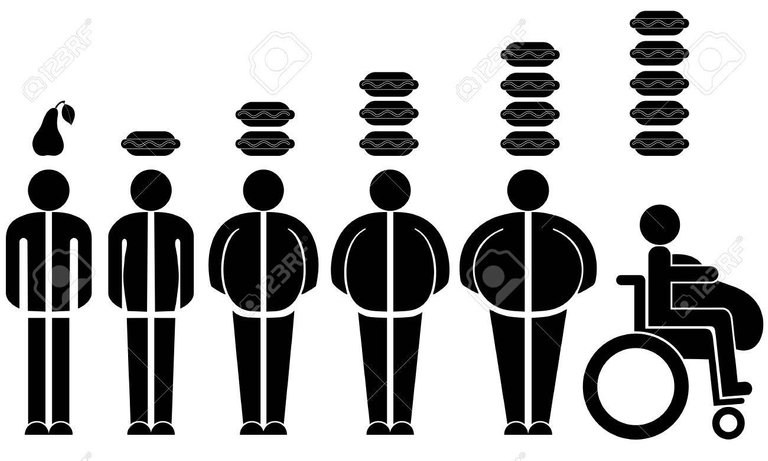
Excess glycation and adiposity harm the body because they place an additional demand for cellular repair processes. Glycation increases demand because it damages the cells, while adiposity increases demand because it leads to the production of additional fat cells. Metabolic conditions (cancer, scurvy, obesity, diabetes) thrive under these conditions because the increased demand for resources and labor to maintain the body leads to ‘accidents’ in cells that the bodies immune system needs to fix. Therefore, metabolic conditions are, in my opinion, always caused by inadequately meeting the bodies’ nutritional needs, but are, regardless of my opinion, empirically shown to exacerbate under conditions of inadequate malnutrition.
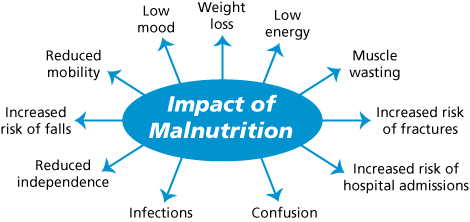
In the case of scurvy, a metabolic disease that occurs after a chronic shortage of Vitamin C, we can observe how the bodies physiological functions deteriorate over time and eventually break down completely after the Vitamin C vanished. Vitamin C is an anti-oxidant which is antagonistic to ‘free-radicals’ who, in turn, are involved in the deterioration of the body because they disrupt the electric flow in the body. ‘Free-radicals’ are intimately linked to glycation [AGEs] and adipose tissue so that the bodies’ need to contain them increases proportionally to the bodies’ glycation end-products and fat-mass. Scurvy exacerbates the symptoms of AGEs and oxidation because the absence of Vitamin C severely diminishes the immune systems’ ability to curtail ‘free-radicals.’ Under the perpetuation of the condition, tooth decay will appear at first. The gums will lose grip of the teeth because the immune system becomes unable to fight off the increased oxidation [ = infammation] of the tissue. Eventually, all teeth are gone, and the body will slowly succumb to the climbing number of erupting infections caused by an acquired immune deficiency syndrome [AIDS] that it caused by the lack of the micronutrient Vitamin C.
The genome under stress
The uncontrolled indigenous reaction of ‘free-radical’ oxygen is called ‘inflammation.’ Ideal physiological conditions can reduce he amount of ‘inflammation’ in the body. Chronic inflammation caused by adiposity is a cause of cancer [14], because it slowly oxidizes, i.e.: burns away the genome [1]. If we extend the notion of chronic inflammation to include that of chronic ‘stress,’ then chronic inflammation as a by-product of adiposity is also the cause of mental disorders [26,27] that often manifest themselves under conditions of stress.
A continuous assault of oxidative ‘free-radicals’ on our body contributes to the aging of the organism and culminates in death. Death is invariably associated with some chronic degenerative diseases such as cardiovascular disease, cancer, and dementia. However, instead of chronological age, the decay of the organism’s genome is not dependent on chronological time. Instead, it depends on the amount of glycation [AGEs] and adiposity and the inflammation they cause within the body, in turn, explaining why people age differently.

Interestingly, the synchronization of aging amongst mammals suggests that only a few genes control the deterioration of an organism [15]. Genetic research suggests that changes in the genes support models with a tiny number of fundamental timing processes that act to speed up or slow down age-dependent change of the body in multiple domains [16,17].

The genome is a combination of different nucleotides (adenine, thymine, guanine, and cytosine) that make up chains. Nucleotides have a chemical bond that alternates one sugar molecule and one phosphate molecule in sequence. These alternating chains form a double helix that contains specific sequences of nucleotides that are called genes. Genes themselves, are instructions which generate proteins that ‘do stuff’ in the body. The presence or absence of proteins is indicative of the internal state of the body so that the genome and the information contained therein must be protected to prevent aging and death of the organism.
The realization that a small number of genes are responsible for regulating the entire aging process affords the question if there are small interventions that can have an effect on them. As most diseases eventually occur in an organism as it ages, reducing the intrinsic factors that control aging in an organism may be the best possible intervention to prevent diseases and mental disorders in general.
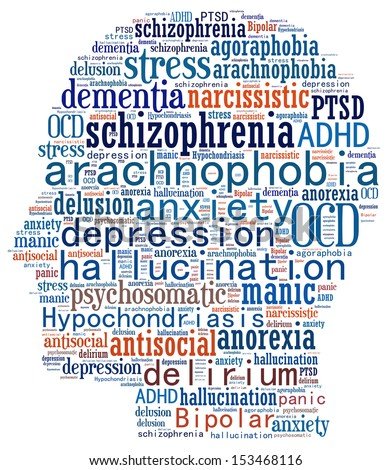
Feeding studies of primates have shown that there is a single intervention that will do exactly this, calorie restriction [33, trivia article, actual feeding studies abundant]. Calorie restriction results in a range of genetic adaptations that make the genome more resilient against decay. Furthermore, they reduce glycation and adiposity, so that, under conditions of severe calorie restriction the effects of ‘free radicals’ are drastically curbed, and the body can preserve mass more efficiently.
A “dis-ease” is the Latin prefix ‘dis’ meaning: “apart,’ ‘away,” paired with the French ‘ease’ which denotes “physical comfort, tranquility, and peace of mind” [30]. It is hard to imagine how an organism may achieve the state of tranquility when it is constantly inflamed, i.e.: under chronic stress.

The physiological mechanism of autophagy, from the Ancient Greek αὐτόφαγος autóphagos, meaning “self-devouring” is the process by which the body disassembles dysfunctional cells, while cells that are resilient remain. As caloric restriction improves an organism’s ability to maintain functional cells because of a lack of glycation or adiposity, it would be interesting to pursue dietary restrictions to combat sickness [animal feeding studies have shown this in primates, mammals, rodents, insects, bacteria, birds and fish]. The intake of fewer calories will reduce inflammation and result in less autophagy. Therefore, this strategy is believed to be conducive to the general resilience and health of the body which has been theorized by several researchers [23, 31].
Physiology and disorders
Though psychologists tend to differentiate between the physiological state of inflammation and the mental state of stress, there is no need to do so because inflammation activates the autonomous nervous system and correspondingly acts on the hypothalamus, the limbic system, and the endocrine system. Neuroscientists have no problem to invoke physiological explanations when they describe the development of depressive symptoms [40,41,42] and have discovered many physiological changes that occur in the hypothalamus of depressed patients.
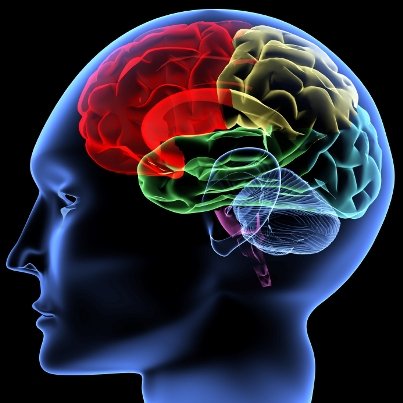
Therefore, it is easy to argue that patients that get diagnosed with mental conditions should be made aware of concrete observable phenomena such as lesions, decreased blood flow or inflammation instead of an abstract idea of a mental disorder when they see psychologists. Concrete objects can be tackled specifically and reproducibly, but abstract ideas are difficult to challenge. Any patient who can realize that their mental disorder is characterized by underlying physiological conditions can formulate a plan to improve his condition. Additionally, patients may come to better terms with their mental condition because a physiological can be overcome. It means that it is not ‘just in their head.’
Furthermore, public education about physiology and its potential involvement in mental disorders may reduce social stigma, because the physiological changes that occur during, e.g.: depression become understood as physiological processes. An understanding can increase acceptability because we are only able to judge familiar and known concepts. Improved understanding of mental disorders could help relatives, acquaintances, family, friends and patients cope with the condition. Additionally, it could spur interest in measures to prevent an occurrence by people. A proactive change in behavior, for example, better nutrient uptake can greatly reduce the risk of both mental and physical disease in the future.

Regardless of the public’s opinion however, patients who know about the physiological factors that can drive the development of their mental disorder can alleviate them to the extent they can improve some physiological factors. The control of one’s physiology is the control of the internal environment of the body. It is possible that simple changes in behavior such as a better nutrient selection could restore a mental function similar to a reversal of scurvy when vitamin C is administered. When patients are able to help themselves by adopting new behaviors then they are empowered to heal and treat themselves and do not depend on a psychologist to do so. Furthermore, changed behavior that improves the physiological processes of the body are also likely going to lead to a decrease in glycation or a drop in body fat which improves overall health. Additionally, an empowering experience such as meeting a weightloss goal can be the first stepping stone towards overcoming some social or cognitive biases that have developed while they were influenced by their physiological condition.
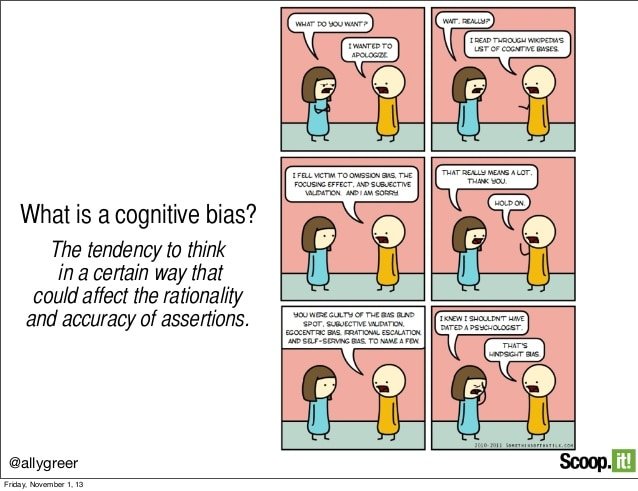
Physiologically, our ability to experience the world depends on our bodies ability to transfer action potentials within our nervous system that relays ‘information’ throughout our bodies. If these electric signals cannot be produced by a cell then some ‘information’ is lost and not transferred between cells. Therefore, all micronutrients are necessary for a proper experience of the world. For example, a lack of vitamin C increases oxidation which would lead to the accumulation of oxidative damage that destroys neurons. This would disrupt the information highway of the brain and could lead to traffic jams that are expressed as lesions. Cells have to shift toward maintenance and generate fewer action potentials. Therefore, a simple shift in nutrition can have a tremendous influence on the well-being of anyone.

It is undoubtedly clear that mental disorders have some intrinsic physiological factors that do not depend on behavior but are the result of behavior. Changing behavior leads to physiological change that is expressed in physis, id est, nature, origin. The change in physiology does not only change the appearence of the body it also represents an intrinsic change that improves the patient’s general health and along with it comes better mental health. The body’s postive change reinforces more energy and a better mood.
However, it is also evident that mental illness is accelerated by agents in our external environment. There are extrinsic factors that influence mental disorders, but the capacity to improve one’s mental condition depends on the bodies ability to change. Therefore, a psychologist should not refrain from physiological explanations to motivate a patient to change hehavior to combat mental disorders. It is necessary for any patient to get as much help as he or she possibly can, ideally from multiple domains of health care, including dietary advice and new activities that replace old habits.
However, some data [24] suggests that few psychologist do invoke physiology when they treat patients. Instead, it is common to reframe a physiological indicator [adiposity] into a social or mental construct [perceptions of adiposity] to explain mental symptoms. Nonetheless, medical researchers do include the physiological markers directly [25, 26]. In study 26 we learn that:
(1) people with inflammatory diseases such as multiple sclerosis, cardiovascular disease, and psoriasis have elevated rates of depression;
(2) many people administered inflammatory cytokines such as interferon alpha develop depression that is indistinguishable from depression in non-medically ill populations;
(3) a significant proportion of depressed persons show upregulation of inflammatory factors such as IL-6, C-reactive protein, and TNFalpha;
(4) inflammatory cytokines can interact with virtually every pathophysiologic domain relevant to depression, including neurotransmitter metabolism, neuroendocrine function, and synaptic plasticity. CAUTION! The result in study 25 suggests that there is no link.
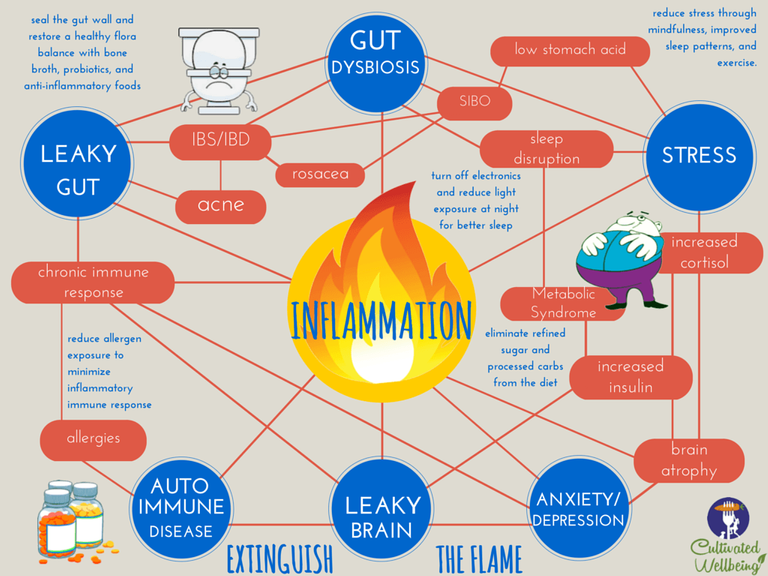
Personally, I evaluate the finding of study 25 which was written by Miller, Freedland and Carney, Settler (2003) and Banks differently. Though their study provides excellent data I do not agree with the authors’ top-down approach in the paper. However, I invite you to read the paper and draw your own conclusions from it.
Study 25 uses a structural equation model in which the authors hypothesize that depression is the cause for adiposity which increases leptin and inflammation as a result. However, given their data, I would argue that a bottom-up explanation is more reasonable. An increase of inflammation can be inversely related to nutrients. Less Vitamin C is a precursor to inflammation, so is Ferrum phosphate because fewer blood cell count will downregulate oxygen availability and increase lactic acid build up in the muscles cells. Acids increase inflammation.
Fewer blood cells afford a change in behavior because under this physiological condition the patient feels perpetually tired. Cells produce less energy when less oxygen is available. The Krebs-cycle necessitates oxygen as fuel for the mitochondrion to produce ATP. This in turn can favor conditions that are relevant to the development of depression. When fewer micronutrients are available the body responds with more leptin, adiposity and inflammation. I think it is plausible that a physiological condition as such can increase the risk to develop mental disorders. Therefore, the bottom-up approach can explain the observed data coherently as a physiological disease. That means my conclusion is different from the one suggested by the authors of study 25.

Nonetheless, the physiological processes that potentially underlie mental disorder are highly complex, and there are many possible pathways for the disorder to occur [study 25 tested six models]. The research presented by the scientists is valuable because it has tested a lot of possible models and opened an avenue for interesting further research. More research has also found links between adiposity, depression [26], and dementia [27]. Dementia is a severe mental conditions that should be avoided at all costs. I, therefore, believe that the best chance for a recovery can primarily focus on diet and secondarily on exercise.
Nutrition has been shown to be the only relevant factor in long-term weight management and provides us with the material that we absolutely need to function. Population studies have shown that a majority of Western populations do not receive adequate amounts of Vitamins to function properly. I believe that dietary interventions are a promising intervention for a range of mental disorders such as addiction, depression and dementia [23, 31].
It may also be possible to benefit from exercise, however these benefits are different as they do not constitute of ideal homeostatic conditions, but as a challenge to cells to perform under positive stress. Postive stress induces autophagy in the weakest cells and improves the growth of the remaining cells to make the body stronger. Essentially it is a controlled stress test to the body that improves the bodies ability to respond to “real” stress.

However, it is not yet clear if there is a high efficacy for dietary restriction and exercise regimens. We only know that the availalbe data suggests that adiposity, depression and dementia are linked. It is much harder to become lethargic when one is pristine health and more likely to pursue activities that allow excitement and relaxation. Instense and stimulating activities require a disease free body that can only be insured when the body has adequate nutrition. From what I can gather of the scientific literature it appears to me that I have outlined a theoretical foundation that can link physiology to mental disorder. Other researchers seem to have similar conclusions about links between nutrition, exercise, meditation and mental health [23, 32].
Parallels to religious systems
Religious practices such as Yoga in Hinduism and Tai-Chi in Buddhism have a long tradition of dietary limitations and exercise regimens to prevent disease to attain enlightenment. Though the meaning of enlightenment is somewhat unclear, it implies a state of pristine health. Both eastern religions regard the elemental air as the carrier of the essence of life called either ‘prana’ or ‘chi,’. The essencee must be guided through the body to attain pristine health and to be able to reach enlightenment.
Undoubtedly, the dietary limitations were prescribed by ancient priests as a form of public health services. Though the concept of health is epxressed differently (for example as imbalance of ‘yin’ and ‘yang’ chi energies in the body) it is similar, even tautological to modern medicine in certain aspects that can be singled out. For example, regardless of one’s opinion about the religious narratives, the scientific data suggests that some Buddhist and Hindu practices work. One example would be Veganism which is the advised diet by both religions as it is stipulated to be conducive to the accumulation of prana or chi, but research shows it to be conducive to the prevention of disease also. Thereby, we may realize an ancient theory of the ‘free-radical’ that uses different language then we do today.

In light of the ontological conceptualizations of the life force Western science has experimentally confirmed that some of the exercise practices used by Buddhists and Hindus work and offer health benefits. Both Hinduism and Buddhism advise breathing exercises and breath control to learn to garner the life force. If more life force is akin to more health then research confirmed that deep breathing can have calming effects on the mind [5, 6, 22]. It is also known that the forced control of the breath can calm the emotion of anxiety and this is often advised and practiced by psychologists when they consult with patients that suffer from anxiety disorders or panic attacks. Similar commonalities to religious practices exist in folk wisdom when people advise taking ‘taking a deep breath’ to release stress.
This concludes my small excursion into the physiological underpinnings of mental health. I hope that I have been able to convince you that are enough reasons to pursue a rigorous scientific investigation into the efficacy of voluntary dietary restriction, exercise, and meditation interventions to combat mental illness. Moreover, I wish to contribute research towards the establishment of a coherent and efficacious dietary, exercise or meditation regimen that has beneficial effects on the physiological state of the body and can help to reverse symptoms of disease and disorder.
How I developed this outlook and how it affects my career
I have developed these opinions after hours of research into science and nutrition. Currently I am writing a Master's Thesis on the Topic of nutrition and mental health. Once I graduate I will be able to pursue of PhD at a research institute in Europe (to be left anonymous on purpose). I hope that you found this long article entertaining for you. At least, it was fun for me to write. I spent several hours on its completion and I hope that you were able to learn something from it. I certainly learned a lot while I was researching this topic in detail and I hope that I will be able to publish an empirical study in a research journal soon.
If you want to read more researched articles with lots of scientific references then give me an upvote or promote my work on steemit. If you have any questions feel free me to send me a mail (you can find it on my website) or ask in the comments.
Best regards
References
The references for this article can be found in the comments.

Congratulations @granunic0rn! You have completed some achievement on Steemit and have been rewarded with new badge(s) :
Click on any badge to view your own Board of Honor on SteemitBoard.
For more information about SteemitBoard, click here
If you no longer want to receive notifications, reply to this comment with the word
STOPCongratulations @granunic0rn! You have completed some achievement on Steemit and have been rewarded with new badge(s) :
Click on any badge to view your own Board of Honor on SteemitBoard.
For more information about SteemitBoard, click here
If you no longer want to receive notifications, reply to this comment with the word
STOPHi! I am a robot. I just upvoted you! I found similar content that readers might be interested in:
https://mariuslohden.org/